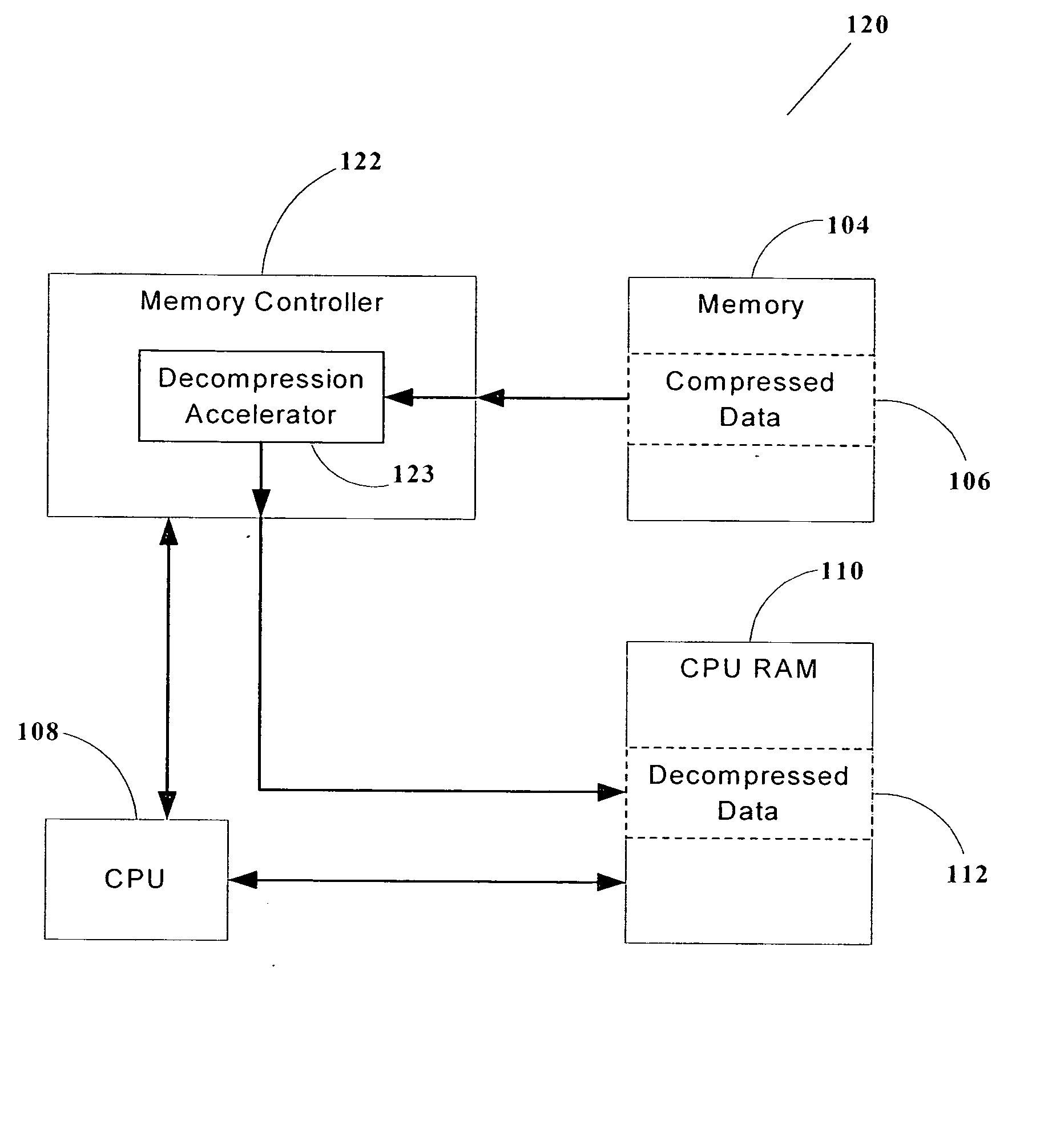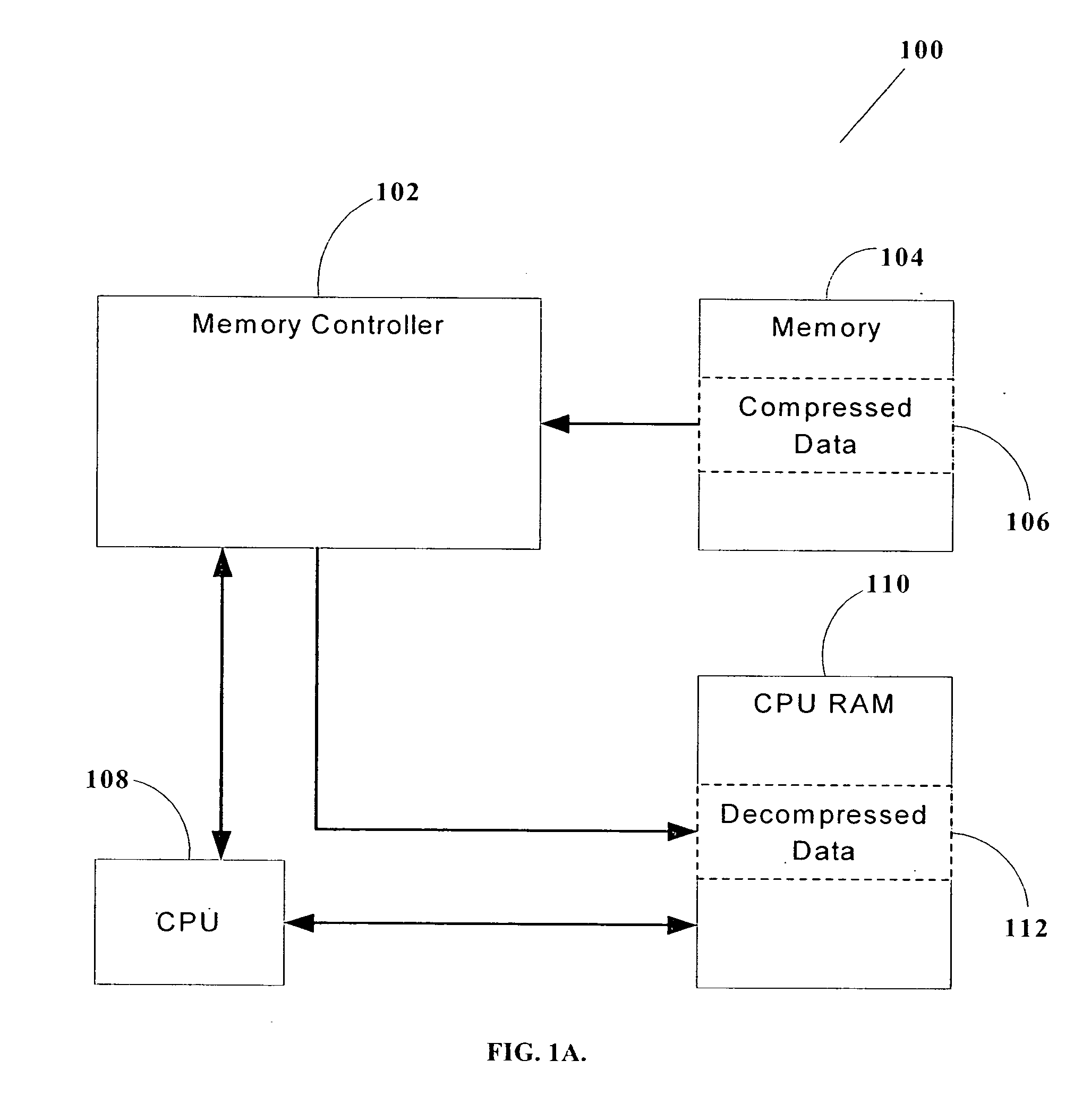Decompression accelerator for flash memory
a decompression accelerator and flash memory technology, applied in the field of lossless data compression and decompression, can solve the problems of reducing the currently-attainable decompression performance, complicating the decompression process, and not achieving optimal compression ratios with lempel-ziv alone, so as to achieve optimal lossless data decompression performance and lossless data compression ratio
- Summary
- Abstract
- Description
- Claims
- Application Information
AI Technical Summary
Benefits of technology
Problems solved by technology
Method used
Image
Examples
Embodiment Construction
[0044] The principles and operation of a method and system for optimizing lossless data compression ratio and decompression performance according to the present invention may be understood with reference to the drawings and the accompanying description.
[0045] As noted previously, the Lempel-Ziv and related Lempel-Ziv-Huffman lossless data compression algorithms are employed as non-limiting examples in embodiments of the present invention, it being understood that embodiments of the present invention are not limited to any particular lossless compression algorithm, but may be applied to any suitable system of lossless compression and decompression.
[0046]FIG. 1B is a block diagram of an embodiment of the present invention and featuring a system 120 containing a memory controller 122 which includes a hardware decompression accelerator 123. The function of system 120 is similar to that of system 100 (FIG. 1A), except that decompression accelerator 123 optimizes the decompression perfo...
PUM
 Login to View More
Login to View More Abstract
Description
Claims
Application Information
 Login to View More
Login to View More - R&D
- Intellectual Property
- Life Sciences
- Materials
- Tech Scout
- Unparalleled Data Quality
- Higher Quality Content
- 60% Fewer Hallucinations
Browse by: Latest US Patents, China's latest patents, Technical Efficacy Thesaurus, Application Domain, Technology Topic, Popular Technical Reports.
© 2025 PatSnap. All rights reserved.Legal|Privacy policy|Modern Slavery Act Transparency Statement|Sitemap|About US| Contact US: help@patsnap.com



